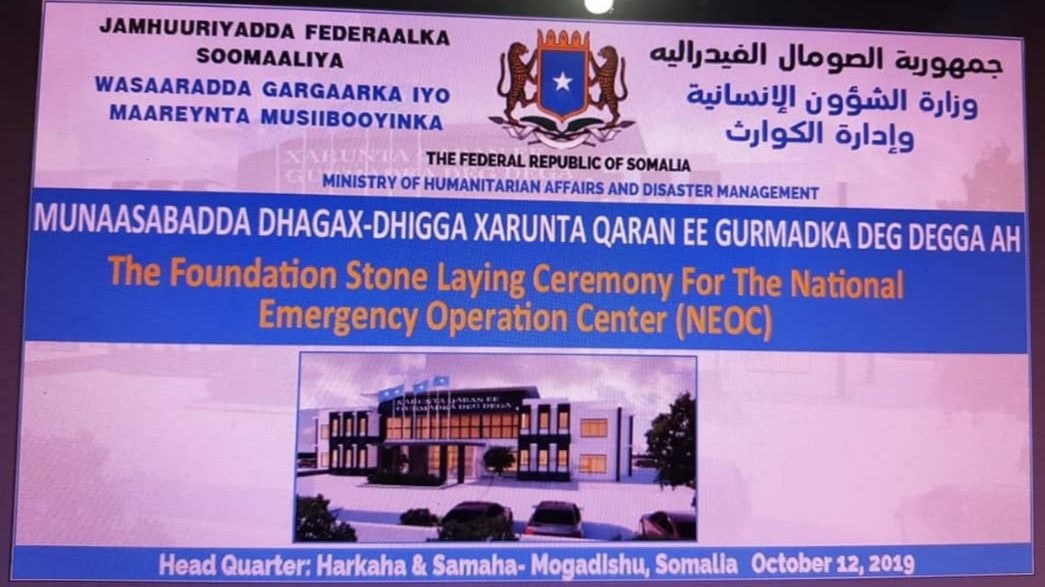Somalia observes International Day for Disaster Risk Reduction
The International Day for Disaster Risk Reduction was observed today in Somalia’s capital Mogadishu in an event presided over by the Prime minister of the Republic of Somalia.
The country is recovering from over two decades of lawlessness and civil wars, having the first central government since the collapse of the Siad Barre Regime in 1991.
The Prime Minister of the Federal Government of Somalia Hassan Ali Khayre today is expected to lay the foundation stone for the National Emergency and the Central Bank.
The International Day for Disaster Risk Reduction was started in 1989, after a call by the United Nations General Assembly for a day to promote a global culture of risk-awareness and disaster reduction. Held every 13 October, the day celebrates how people and communities around the world are reducing their exposure to disasters and raising awareness about the importance of reining in the risks that they face.
The only free ambulance service in Somalia’s capital is under threat of closure and is having to use fewer vehicles. Aamin has a fleet of 16 ambulances but can now only afford to operate 10 on a regular basis in Mogadishu, which suffers regular bomb attacks.
Founded over a decade ago by a Somali dentist and funded by donations, Aamin Ambulance has become an essential lifeline for ordinary folk, whether victims of armed violence, car accidents or complicated birth.
Somalia is no stranger to disasters, both natural and man-made. One disaster sometimes coming on the heels of a previous one. Putting unprepared and often vulnerable communities on the brink of catastrophe. While the onset of a natural hazard cannot be avoided, a lot can be done to mitigate the adversity of the natural and human-induced disasters with enough preparedness and disaster management strategies in place.
Only six years after the tragic famine that claimed the lives of 260,000 people and decimated over 70% of the pastoral livestock particularly in the southern regions of Somalia (2011/2012), more than half of the Somali population-6.7million- out of 12 million, people are at risk of famine and in need of immediate humanitarian assistance (2017). According to the May 2017 estimations by the FAO managed Food Security and Nutrition Analysis Unit (FSNAU), 3.2 million out of the 6.7 million people are in ‘crisis’ and ‘emergency’ humanitarian situation.
The continuous failure of the rains in 2016 through 2017 has led to the loss of livelihoods, scarcity of water and pasture and the displacement of many people (766,000 people- UN report July 2017). Acute watery diarrhea and cholera have claimed over 1,000 life.
The frequency of disasters occurrence in Somalia is coming one after the other, with shorter intervals of periods.
The formulation of the National Disaster Management Policy in 2018 offered a glimmer of hope in preserving lives and properties and protecting the local economies.
This year’s theme is based on one Target of the Sendai Framework for Disaster Risk Reduction 2015-2030: ‘Substantially reduce disaster damage to critical infrastructure and disruption of services through developing resilience by 2030’.
Every year, disasters caused by natural hazards affect millions of people around the world.






